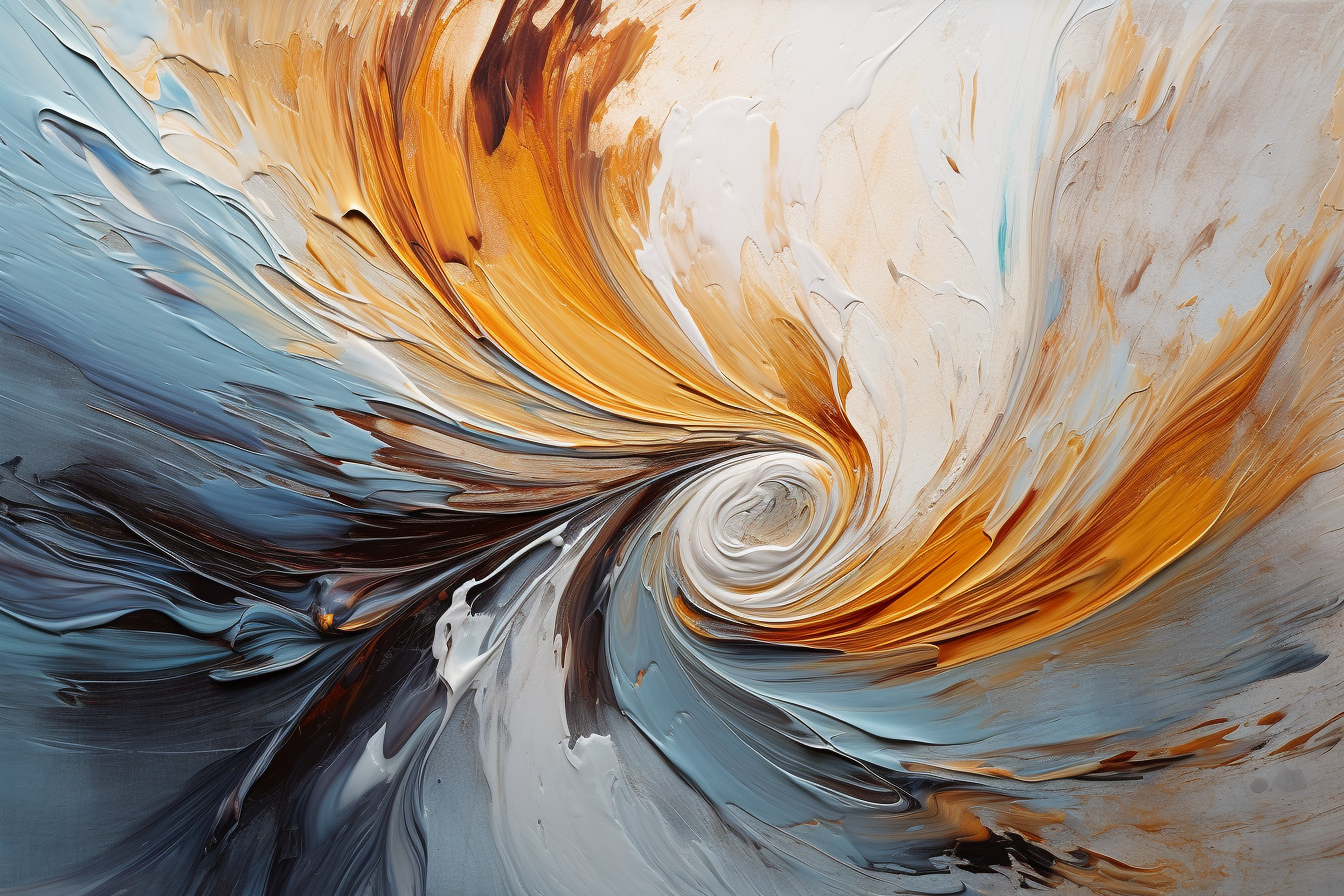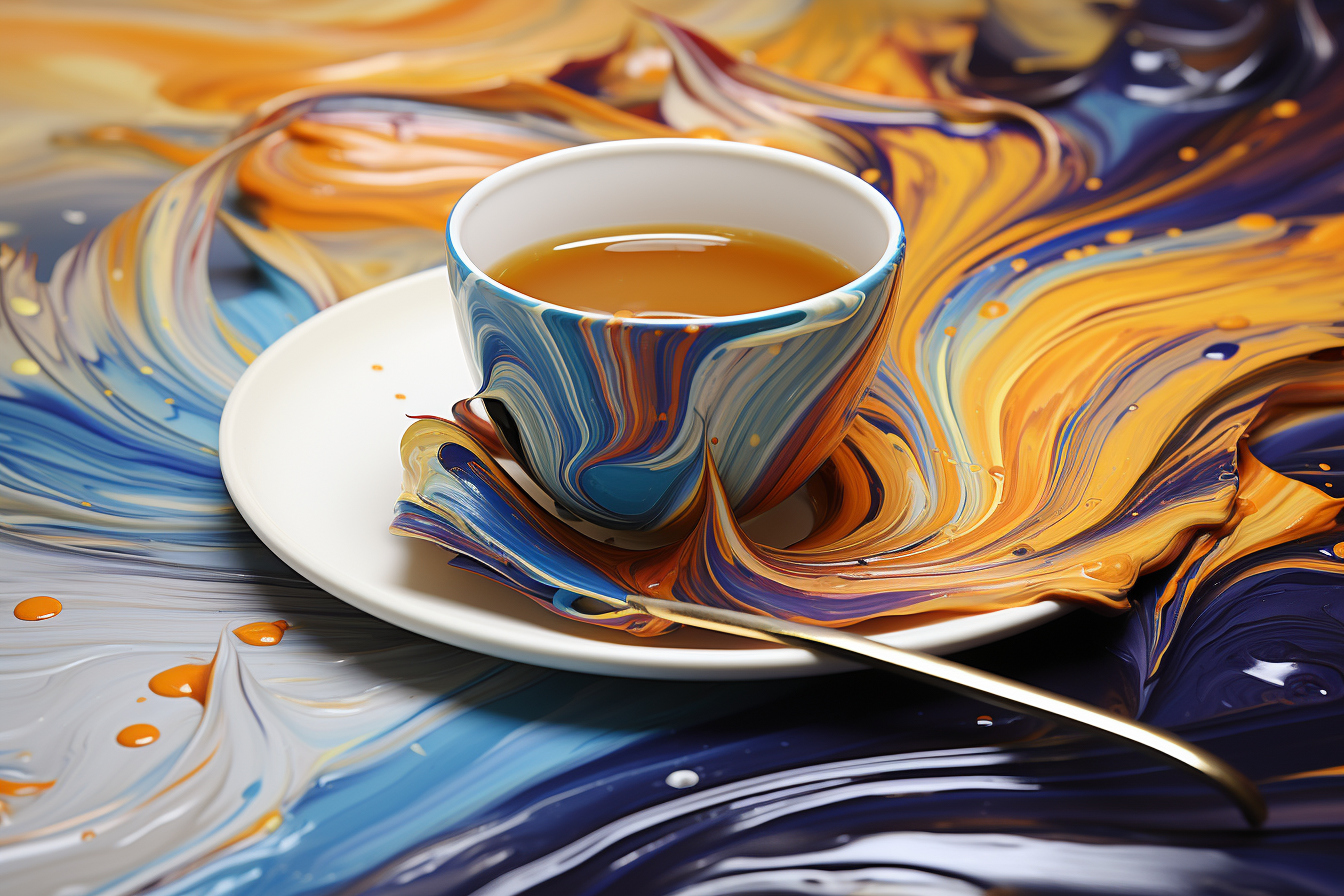Painting with coffee is an unconventional but incredibly creative artistic technique. This method involves using liquid coffee to create unique and original works of art.

The magic of coffee color
Coffee, with its rich brown shades and tonal variations, offers a natural and warm color palette. Before you begin your project, it is essential to prepare your coffee, brewing and cooling it to achieve the best texture and color intensity. You can even experiment with different types of coffee to get subtle variations in your shades.
Preparation of the support
Before you start painting, it is important to properly prepare your surface. Choose thick paper or canvas to ensure good absorption of the coffee and avoid sagging. You can also apply a coat of primer to seal the support and allow better adhesion of the coffee paint.
Coffee Painting Techniques
There are different techniques for creating interesting effects and textures with coffee. Here are some of the most popular:
- Washes: Use a fine brush and dampen it with diluted coffee to create transparent washes. This technique is ideal for backgrounds and subtle gradients.
- Splashes: Dip a toothbrush or paintbrush in concentrated coffee and splash it on your media to create spontaneous splashes and textures.
- Scraping: Let a layer of coffee dry and use tools such as a credit card or knife to scrape the surface and create lines and shapes.
- Layering: Wait until each layer of coffee is completely dry before applying a new layer. This will allow you to layer colors and create depth effects.
Tip: play with drying times
Coffee drying time may vary depending on different factors such as humidity and ambient temperature. Play with these settings to create interesting effects. For example, if you add a new layer of coffee while the previous one is still wet, the colors will mix and blend into each other.
Precautions and maintenance
It is important to note that coffee can permanently stain surfaces and clothing. So be sure to protect your work surfaces and wear appropriate clothing. After you have finished your work, you can fix it with a fixative spray to prolong its durability and prevent possible damage caused by humidity.
Let your creativity run wild
Coffee painting offers unlimited artistic freedom. Do not hesitate to combine this technique with other mediums such as watercolor or ink to create even more interesting effects. Let yourself be guided by your imagination and explore the endless possibilities of this unique technique.
Therapeutic benefits of coffee painting
Did you know that coffee painting goes beyond artistic boundaries to venture into the realm of well-being and therapy? Indeed, the creative process linked to this unique technique can have significant therapeutic benefits for those who practice it.
The stimulating smell of coffee: Starting by smelling the sweet, comforting aroma of coffee can have a calming, and even energizing, effect for many. This olfactory experience can help reduce stress and anxiety, providing a feeling of well-being before you even start painting.
Concentration and meditation: The need to adjust the consistency of the coffee, focus on details and control every movement offers a form of meditation in action. This intense concentration allows the artist to disconnect from external distractions and immerse himself entirely in the present moment.
Acceptance of imperfection: Unlike other mediums, coffee paint has an unpredictable nature, with its drips and variations in color. This characteristic can help the artist embrace imperfection, learn to let go and accept that each work is one of a kind, even with its small “imperfections”.
Emotional expression: Like any art, coffee painting allows you to express emotions, feelings and thoughts, often in a subtle way thanks to the softness and variety of coffee nuances. For some, it can be a form of emotional outlet, allowing pent-up feelings to be released.
The satisfaction of discovery: With coffee being a relatively new medium in the art world, there is always a feeling of exploration and discovery. This curiosity and desire to experiment can boost motivation and self-esteem.
The link between café culture and art
Coffee is not just something found in the cups of millions of people every morning; it is also a rich culture that has a long history of interaction with art. Incorporating coffee painting into this tradition provides a unique way to celebrate this heritage.
The history of the café as a gathering place: From the first cafes in Mecca, to the famous cafes of Vienna and Paris, these establishments have always been meeting places for intellectuals, artists and writers. In these places, ideas were exchanged, revolutions planned, and works of art designed. Coffee painting offers homage to this tradition, harkening back to the days when artists sketched sketches on coffee tablecloths.
The influence of coffee in literature and painting: Many writers and artists have referenced coffee in their works. Whether it’s a coffee scene in a novel or a representation of a coffee on a canvas, this beverage has always had a special place in art. Using coffee as a medium, the artists make a direct connection to this rich history.
The fusion of two worlds: By painting with coffee, artists merge two worlds: that of art and that of coffee culture. This creates a multi-sensory experience, where the smell, color and texture of the coffee enrich the artistic experience. It’s a way for artists to honor the long relationship between coffee and creativity.
The potential for innovative collaborations: Using coffee as a medium also opens the door to exciting collaborations. Imagine art exhibitions in coffee shops, where visitors can taste different types of coffee while admiring works created with that same coffee. This offers an immersive experience, uniting art, culture and taste.
The Environmental Impact of Coffee Paint
In an age where sustainability and environmental impact are top of mind, coffee painting stands out as an eco-friendly artistic method. This technique offers an ecological alternative to certain industrial paints, which may contain chemicals harmful to the environment and health. Let’s dive into the environmental benefits of this unique technique.
An alternative to chemicals Traditional paints, especially oil-based paints, can contain solvents, preservatives and additives that can be harmful to the environment when thrown away or washed away. Coffee, being a natural substance, does not contain these chemicals, making it a more environmentally friendly option.
Waste reduction Instead of throwing away coffee left after drinking a cup, it can be reused as a painting medium. This not only reduces waste, but also the need to produce additional paint materials, thereby reducing the carbon footprint.
Low water consumption The production of traditional paints often requires large quantities of water. With coffee paint, only a minimal amount of water is needed to dilute the coffee as needed, contributing to a more responsible use of this valuable resource.
Non-toxicity for the artist Although not directly an environmental benefit, it is worth noting that coffee poses no toxic risk to the artist, unlike some paints which can emit harmful fumes when used or dried.
Promotion of ecological awareness Using recycled or natural materials in art can raise awareness of the importance of sustainability. By choosing to paint with coffee, artists can inspire others to think about how they can incorporate more eco-friendly practices into their daily lives.












